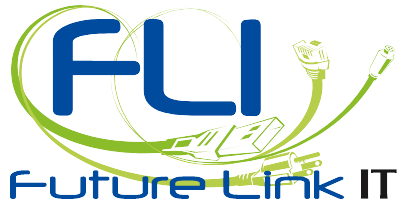The healthcare industry has increasingly relied on technology to improve patient care and streamline operations. While these technological advancements have brought numerous benefits, they have also exposed medical practices to growing cybersecurity threats. Protecting sensitive data is crucial, and understanding the top risks is the first step toward safeguarding medical practices.
This blog will walk you through the five most prevalent cybersecurity threats medical practices face and discuss how partnering with an IT expert can help mitigate these risks with reliable healthcare cybersecurity solutions.
Phishing Attacks
Phishing attacks are a common and insidious threat in the healthcare sector. Cybercriminals send deceptive emails that appear to be from trusted sources, such as insurance companies or colleagues, to trick employees into revealing sensitive information or downloading malicious attachments. In a doctor’s office, falling victim to phishing can lead to the compromise of patient data and financial information.
Mitigation: Educating staff about the signs of phishing emails is essential. Using email filtering solutions and implementing two-factor authentication (2FA) for email accounts is necessary. Regular training and simulations can also help employees recognize and avoid phishing attempts.
Ransomware
Ransomware attacks have become increasingly prevalent in healthcare. These attacks involve malicious software that encrypts a doctor’s office’s data, rendering it inaccessible until a ransom is paid. Given the critical nature of patient records, these attacks can have severe consequences.
Mitigation: Regular, on-site and off-site data backups are crucial for recovery without paying a ransom. Keeping software and systems updated with security patches and robust antivirus software can also help prevent ransomware infections. Employee training on security best practices is vital to avoid falling prey to ransomware.
Insider Threats
Insider threats can be particularly damaging in healthcare settings, as employees can access sensitive patient information. These threats can be intentional, such as an employee intentionally stealing data, or unintentional, like a staff member clicking on a malicious link.
Mitigation: Implement strict access controls and permissions to limit who can access patient records. Conduct background checks on employees and monitor their activity for any suspicious behavior. Employee training and awareness programs can also reduce the risk of unintentional insider threats.
Outdated Software and Hardware
Running outdated software and hardware is an open invitation to cyberattacks. Many older systems lack the security features necessary to protect against modern threats. Medical device cybersecurity is imperative to stop attacks.
Mitigation: Keep all software and hardware updated with the latest security patches. Regularly retire and replace outdated equipment and implement network segmentation to isolate older systems from critical data.
Lack of Cybersecurity Policies
Without clear cybersecurity policies and procedures, doctor’s offices are more vulnerable to attacks. Employees may not know how to respond to security incidents or may inadvertently create security weaknesses.
Mitigation: Develop comprehensive cybersecurity policies that cover data protection, incident response and employee training. Ensure all staff members know these policies and provide ongoing training and reminders.
Final Note: The importance of healthcare cybersecurity solutions cannot be overstated in the healthcare sector. A proactive approach to security can make or break an office. At Future Link IT, we can help you protect sensitive patient data and maintain the trust of both patients and regulatory bodies. Contact us to see how we can help you stay vigilant while adapting to emerging threats.
healthcare

